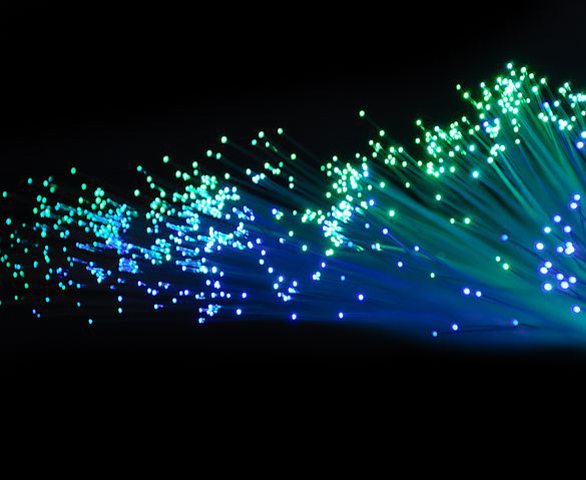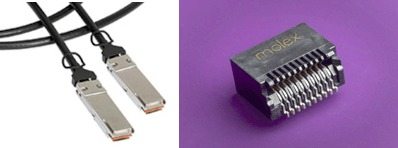How Software Innovation Can Protect Demand for Fibre Channel and its Connectors
Observers have claimed Fibre Channel, which powers Storage Area Networks (SANs), has been in decline for years, replaced by newer, faster standards. But innovations in storage network software and infrastructure may help keep demand for Fibre Channel and its dedicated connectors and cables alive.
By Neil Shurtz
 Computing applications are continuing to grow in complexity. Processes such as machine learning, deep learning, and advanced analytics demand more and more from computing hardware, and some parts of the electronics industry are beginning to fall behind. With rapid growth, it’s to be expected that innovation will not always be balanced, and that some parts of the IT infrastructure will develop better speed and efficiency earlier than others.
Computing applications are continuing to grow in complexity. Processes such as machine learning, deep learning, and advanced analytics demand more and more from computing hardware, and some parts of the electronics industry are beginning to fall behind. With rapid growth, it’s to be expected that innovation will not always be balanced, and that some parts of the IT infrastructure will develop better speed and efficiency earlier than others.
This is indeed the case with IT infrastructure today. For example, deep learning (a branch of machine learning) demands a certain type of high-speed processing that is more efficiently accomplished by GPUs (graphical processing units) than by CPUs (central processing units). At the same time, storage media has improved immensely with innovations like affordable solid-state drives (SSDs). So far, one of the remaining major missing pieces in this innovation puzzle is the link between advanced, high-speed computing and new, solid-state or flash-based high-speed storage. Without balancing network infrastructure innovation with innovation in storage and processing, organizations won’t be able to fully tap the improvements in these new technologies.
The problem for many organizations is that replacing their old physical network infrastructure is a very costly proposition. So, the question is: Where does this network infrastructure innovation gap leave the demand for data center components?
The Rise of the SAN
Efficiently connecting storage to processors is a very old problem, and one that has spurred many ingenious network architectures over the years. These include direct-attached storage (DAS), out of which grew network-attached storage (NAS). While these network-based storage architectures had advantages for data access, they demanded a lot of bandwidth on existing infrastructure. As a result, the SAN was developed. SANs were totally separate from the rest of the local area network (LAN), and consequently had improved performance, but also demanded their own dedicated infrastructure and protocols.
Fibre Channel: Powering the SAN
From a data center component perspective, this is where things get interesting. From its initial development in the late 1980s through the early 2000s, Fibre Channel infrastructure gradually became the standard on which SANs were built. Today, companies across many industries have invested in dedicated Fibre Channel infrastructure, and rely on it to power their SANs.
Of Fibre Channel’s five layers, the physical layer, including cabling and connectors, represents a substantial investment. Initially, these ports, connectors, and cables were all optical fiber technologies, hence the name. Eventually, other technologies were supported as well, including those based on copper wire. (To reflect this expanded range of materials, the industry decided to use the British spelling fibre to differentiate the technology from the material.)
Fibre Channel ports and connectors vary by manufacturer, but they are also standardized under Fibre Channel Physical and Signaling Standards. Common Fibre Channel interfaces include the small form-factor pluggable (SFP) interface and the Quad Small Form-Factor Pluggable (QSFP) interface, both of which are built around both optical and copper electrical technology. Connector and cable companies such as Molex have long offered components that adhere to these formats.

Molex zQSFP+-to-zQSFP+ cable assembly (left), 30 AWG, 0.50m length. Molex SFP connector with 0.80mm pitch SFP (right), SFP Plus (SFP+) host connector, Z-axis pluggable, right angle, surface mount, 20 circuits, 0.38μm gold (Au)
While these connectors, ports, cable assemblies, and related components are used in other optical and copper electrical networking applications, companies continue to market them specifically for Fibre Channel applications. This indicates that Fibre Channel remains a primary market for these components, and any industry-wide changes in technology could have a significant effect on demand.
Fibre Channel: Dead or Not?
The future demand for components used in Fibre Channel infrastructures depends on the technology’s potential for longevity. Not long after its rise to dominance powering SANs, some observers began to predict the death of Fibre Channel in favor of other networking technologies, particularly those based on Ethernet.
While newer Ethernet-based standards may offer certain advantages, the new computing technologies like flash memory might actually be increasing the lifespan of what is now sometimes seen as an aging standard. In some ways, Fibre Channel’s dedicated infrastructure, high speeds, and lossless delivery of raw block data offer the potential to enable high-speed storage better than Ethernet. In addition, the substantial investments many companies have made into Fibre Channel infrastructure means they will likely be reluctant to switch to a standard with entirely different hardware.
In fact, these infrastructure investments may be so substantial that overcoming Fibre Channel’s shortcomings through software innovation might make more sense for companies than undertaking a rip-and-replace with faster technology. A number of companies, including Vexata, offer storage architecture solutions that embrace Fibre Channel rather than rejecting it for newer, faster alternatives.
451 Research reports that the Vexata system runs entirely on Fibre Channel, and beats faster alternatives through clever performance optimizations alone. Why? Because Fibre Channel dominates Vexata’s target market, a market that is in their estimation unwilling or unable to abandon their Fibre Channel investments, including connectors and cables.
While the long-term viability of a standard that dates to the late 1980s and had its heyday over a decade ago may look bleak, the reality is that fundamental change at the physical layer of network infrastructure comes more slowly than innovation at other levels, particularly when it comes to core network infrastructure. Remarkably, for the foreseeable future it might be easier to innovate around older technologies. Consequently, in spite of a decade of tolling bells for Fibre Channel, the standard is poised to remain prominent, and the demand for its connectors, cables, and other components will remain alive.
For detailed information as well as current and future sales numbers on Fibre Channel connectors and cable assemblies, please see Bishop & Associates research report The High-Speed Data Communications and Connectivity Market – 2017 and Beyond.
Neil Shurtz is a freelance writer based in Seattle. Shurtz’s areas of interest include sensor and telecom components, autonomous vehicles, and connected infrastructure.

